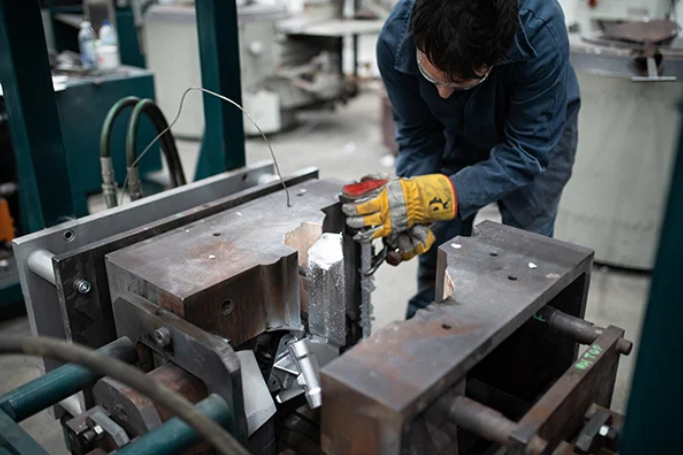Designing an Efficient Plastic Bottle Crate Mold
Introduction
Plastic bottle crates are essential for the transportation and storage of various beverage bottles. To ensure the efficient production of these crates, it is crucial to design an optimized plastic bottle crate mold. This article will discuss the key considerations and steps involved in designing an efficient plastic bottle crate mold.
Design considerations
1. Bottle crate dimensions: The first step in designing an efficient mold is determining the dimensions of the plastic bottle crate. This includes the length, width, and height of the crate, as well as the number of bottle slots. These dimensions should be carefully chosen to maximize the storage capacity and minimize wasted space.
2. Material selection: The choice of material for the mold is critical to ensure the durability and longevity of the plastic bottle crate. High-density polyethylene (HDPE) is commonly used due to its excellent strength and impact resistance. It is also important to consider the recyclability of the material to promote sustainability.
3. Parting line placement: The parting line is the separation between the two halves of the mold. The placement of the parting line should be strategically chosen to minimize the complexity of the mold and facilitate easy ejection of the finished crate. A well-placed parting line will also minimize the need for additional mold components, reducing costs and maintenance requirements.
4. Venting and cooling systems: Proper venting and cooling are crucial for the efficient production of plastic bottle crates. Venting allows for the escape of air and gases during the molding process, preventing defects such as air pockets or incomplete filling. An efficient cooling system ensures faster cycle times and reduces the risk of warpage or deformation.
5. Gate design: The gate is the entry point for the molten plastic material into the mold cavity. The gate design should be carefully considered to ensure smooth flow and optimal filling of the crate cavities. A well-designed gate will minimize the occurrence of flow lines or weld lines, enhancing the overall aesthetics and structural integrity of the crate.
Steps in designing the mold
1. Conceptual design: The first step in the mold design process is to create a conceptual design based on the requirements and considerations discussed above. This involves creating a 2D or 3D model of the mold, considering the parting line placement, venting, cooling, and gate design.
2. Detailed design: Once the conceptual design is approved, a detailed design of each mold component is created. This involves specifying the dimensions, tolerances, and material requirements for each part. The design should also consider factors such as ease of assembly, maintenance, and optimal use of available resources.
3. Mold manufacturing: After the detailed design is finalized, the mold components are manufactured using machining or additive manufacturing techniques. The materials used for the mold should be selected based on their strength, durability, and ability to withstand the molding process.
4. Mold assembly and testing: Once all the mold components are manufactured, they are assembled and tested for functionality. This includes verifying proper alignment of the mold halves, testing the venting and cooling systems, and conducting trial runs to ensure optimal filling of the crate cavities.
5. Optimization and refinement: After the initial testing, any issues or inefficiencies identified during the production process are addressed and refined. This may involve making adjustments to the gate design, venting, cooling, or parting line placement to achieve optimal production efficiency.
Conclusion
Designing an efficient plastic bottle crate mold requires careful consideration of various factors, including crate dimensions, material selection, parting line placement, venting and cooling systems, and gate design. By following the steps outlined above and continuously optimizing the mold design, manufacturers can ensure the production of high-quality plastic bottle crates with minimal waste and maximum efficiency.
-
Manufacturing High-Quality Plastic Injection Chair Moulds
2023-9-30
Introduction: Plastic injection chair moulds play a crucial role in the manufacturing process of chairs. These moulds ar...
View details -
Creating High-Quality Plastic Injection Crate Molds for Efficient Storage Solutions
2024-1-3
Plastic injection crate molds are essential in the production of durable and efficient storage solutions. They play a cr...
View details -
Exploring the Process of Injection Molding Plastic: An Overview
2023-8-14
Introduction: Injection molding is a widely used manufacturing process for producing plastic products. It involves injec...
View details -
What is injection molding and what is the cost of injection molding
2022-11-21
All movement during injection molding, whether hydraulic or electric, creates injection pressure. Proper control of the ...
View details -
China Medical Molding Parts manufacture – An Essential Component for the Healthcare Industry
2023-5-10
Medical molding parts are an essential component of the healthcare industry. These parts are used in a variety of medica...
View details -
Automotive Parts Production with Injection Molding Technology
2023-5-31
Automotive parts production is a complex process that involves a variety of technologies and materials. One of the key t...
View details








